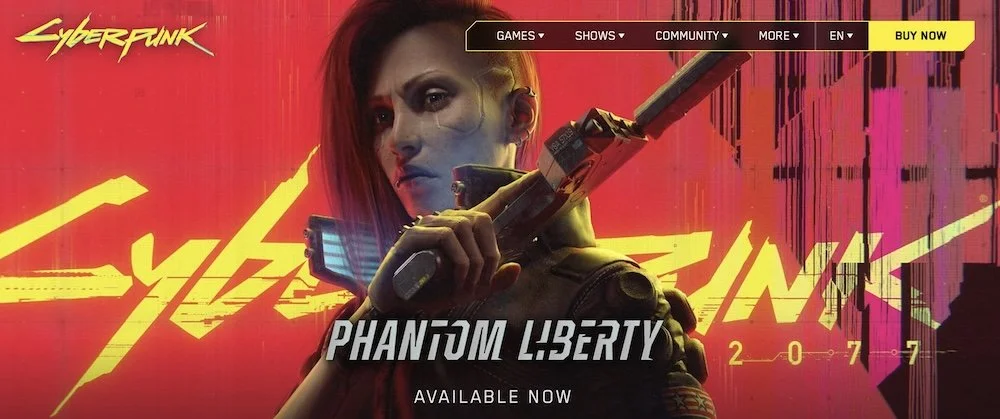Urban Planning and Environmental Design in Video Games
Screenshot from Ania Bulavina’s talk “Urban Planning in Games“
This week I watched an insightful GDC talk by Ania Bulavina, a Senior Environment Artist at CD Projeckt Red. She worked on Phantom Liberty the 2023 expansion of the game Cyberpunk 2077 and her background includes a Masters in Urban Planning and a Bachelor Degree in Architecture.
I’ve been fascinated by maps and location-based content for a while and there were many aspects of Bulavina’s talk that I found are directly applicable to world building for extended reality and immersive experiences.
This talk was recorded at GDC 2025 and in this article I highlight some of my personal takeaways and examples.
“When we create an urban environment for games… we don’t have to make it realistic. The goal is to make it believable”
Urban planning akin to character design
A fascinating point that Bulavina makes very early in her talk is that she likens environmental design and city design to character design. One might start with the basic anatomy and physiology of a human character but then you begin to play with specific proportions or characteristics that are not necessarily realistic but are related to the game’s lore or mechanics. This process forces you to consider the “character” of a place. Is it more active at day or night? Who lives here? How do they get around? A city that heavily relies on public transport (Tokyo, London) is laid out in a very different way that is more car dependent (Los Angeles, Jakarta or even Perth!) encourages walking (New York) or even bike riding (Amsterdam).
The difference of effective environmental design or city design in video games is illustrated so well in Bulavina’s image below. It also demonstrates the importance of recognising that environmental design is closely linked with level design. Bulavina also emphasises that world building like this is a collaboration between artists like her and game designers.
Screenshot from “Urban Planning in Video Games” by Ania Bulavina.
Environmental cues can guide player movement and behaviour
Decisions about the environment is designed can help provide psychological cues as to how a player should navigate a space. For example, large scale city design includes factors like size, proportions, level of detail, layout) can impact the speed of gameplay. Introducing more details can encourage the player to slow down and take notice. While a tunnel with few exits and repetitive visuals could encourage the player the speed up.
Introducing different shapes can also influence speed for example when a road curves we tend to slow down and when it’s straight we’re inclined to accelerate.
Gain inspiration from real places
Even if you’re creating a fictional setting you can gain inspiration from real locations. Either generally (you could research medieval towns and look for layout commonalities) or specifically (taking an image from Google Maps or Search of a particular street in Morocco) and base your street corner on that specific angle.
World building
Urban planning and environmental design is literally world building!
Neighbourhood identities can be portrayed via specific architectural styles from particular time periods, colours, varying heights, age, socioeconomic strata, use (retail, residential, commercial) and landmarks - just like in real life!
The importance of landmarks to guide the player and help orient them within the world reminds me of this podcast episode via NPR’s LifeKit on improving your sense of direction. Landmarks are a valuable tool for every day navigation in the physical world as it helps us create a mental model of a physical environment.
Prototyping
As a fan of early prototyping I loved Bulavina’s use of very basic layouts to help test important core elements including first person perspective, scale, speed.
Learnings for my own game in mixed reality
Bulavina’s techniques made me reflect on what principle’s I could apply to mixed reality games how could I:
Incorporate the existing attributes of a player’s physical room such walls, ceiling, floor? In effect, leveraging these features rather than trying to hide or ignore them?
Distort or subvert expectations regarding these physical attributes? For example, placing a virtual hole in the ground?
Play with proportion and scale in an unexpected way? Particularly as the player is located in a familiar physical setting?
Walking in someone else’s shoes
An interesting aspect of environmental design is that we’re all immersed in it every day, but rarely do we take notice of our surroundings. To challenge myself and sharpen my own powers of observations I walked through central Fremantle and made these related observations
Very flat with little elevation
Predominantly 2 to 3 storey 19th century buildings
Fremantle Markets, Town Hall, South Terrace and Esplanade Park as major landmarks for orientation
One way streets guide traffic in specific directions
Pedestrian options can be encouraged or deterred depending on doors, gates, signage, ground cover (mulch, mud), visual attractiveness, and what might be visible at a distance (lighting, signs, noise)
I encourage you to watch the whole talk here!
You can also follow Ania Bulavina on LinkedIn.


